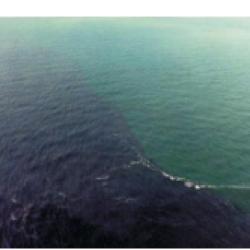Source Institutions
Source Institutions
Add to list Go to activity
Activity link broken? See if it's at the internet archive

An estuary is a body of water that is created when freshwater from rivers and streams flows into the saltwater of an ocean. To understand this mixing of fresh and salt water, learners go through several activities: 1) in Salt and Water, learners dissolve salt crystals in water to observe their effects on water; 2) in Making a Salt Wedge, learners make a model of a salt wedge estuary, which occurs in nature when the mouth of a river flows directly into seawater; 3) in Plant Dehydration learners observe the effects of salinity (salt content in the water) on live plants. Includes a wrap-up guide for group discussions.
- 5 to 10 minutes
- 1 to 4 weeks
- $10 - $20 per group of students
- Ages 8 - 18
- Activity, Lesson/Lesson Plan, Model, Simulation
- English
Quick Guide
Materials List (per group of students)
- measuring spoons
- 2 tbsp Kosher salt or sea salt
- microscope or magnifying lens
- microscope slide or clear plate
- plastic stirrer or spoon
- 1/2-liter bottle of water
- eyedropper or medicine dropper
- large clear plastic tub or baking dish (9X13)
- ruler
- 1 liter tap water (room temp)
- 1/2-liter bottle of saltwater solution
- food coloring
- 3 or 5 oz. paper cup
- small marbles, stones or pebbles
- pencil, pen or other object with sharp point
- book or wooden block at least 1 inch wide
- four freshwater plants or fresh celery
- four 1000-mL cylinders or 1-liter clear plastic bottles
- four test tubes or small jars
- permanent marker
- masking tape
- dechlorinated tap or spring water
- 9-oz clear cup
- freshwater plants or celery
- student journals and writing tools
Subjects
-
Earth and Space Science
-
Earth Structure
- Oceans and Water
-
Earth Structure
-
Life Sciences
-
Diversity of Life
- Plants
-
Ecology
- Ecosystems
-
Diversity of Life
-
Physical Sciences
-
Chemistry
- Solutions
-
Chemistry
-
The Nature of Science
-
The Scientific Process
- Conducting Investigations
- Gathering Data
- Formulating Explanations
- Communicating Results
-
The Scientific Process
Audience
To use this activity, learners need to:
- see
- read
- touch
Learning styles supported:
- Involves teamwork and communication skills
- Involves hands-on or lab activities
Other
Components that are part of this resource:
Includes alignment to state and/or national standards:
This resource is part of:
Access Rights:
- Free access
By:
Source Collection
- Science After School Consumer's Guide
Rights:
- All rights reserved, State of New Jersey, 2006
Funding Source:
- No Child Left Behind Act of 2001
